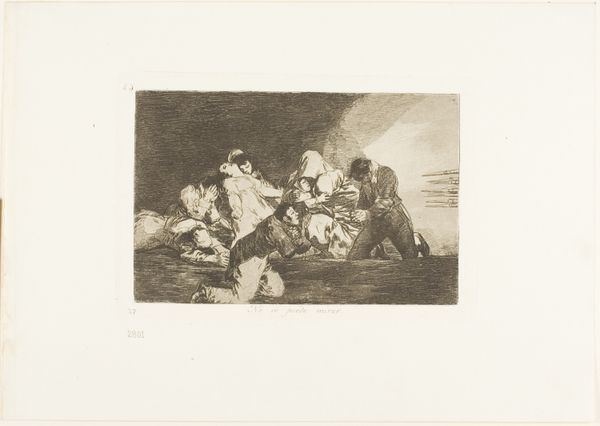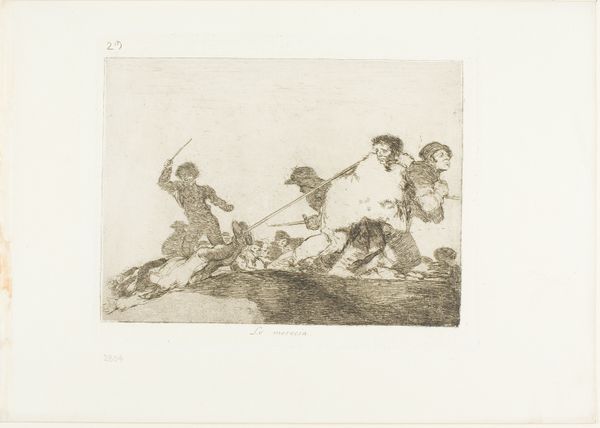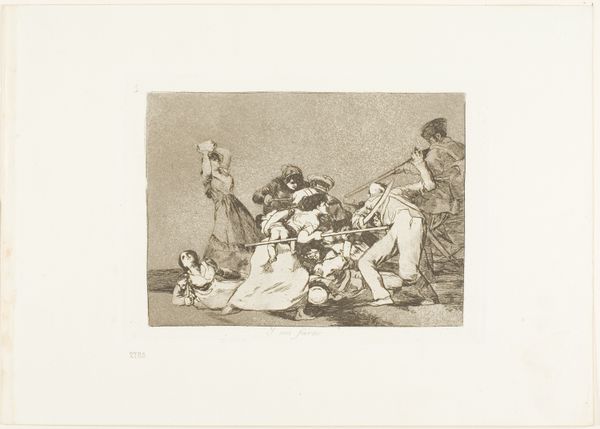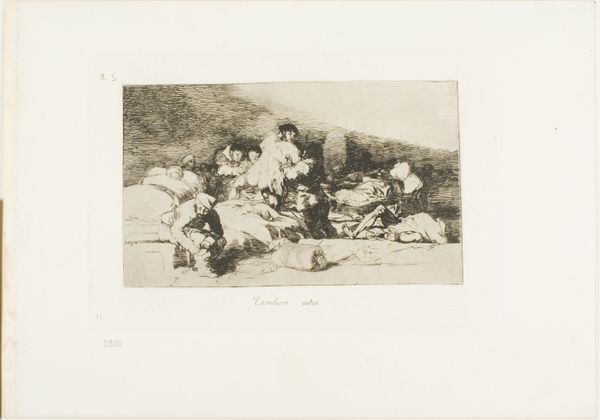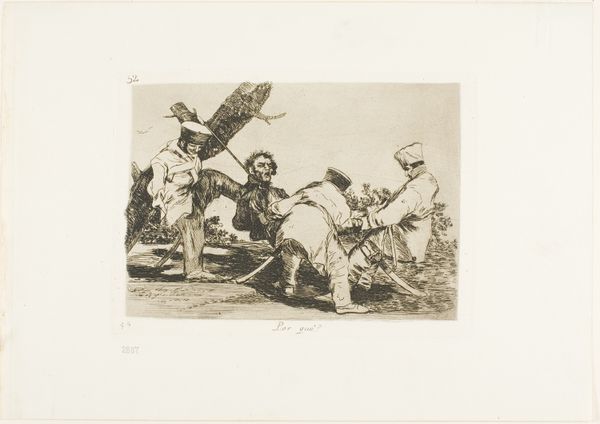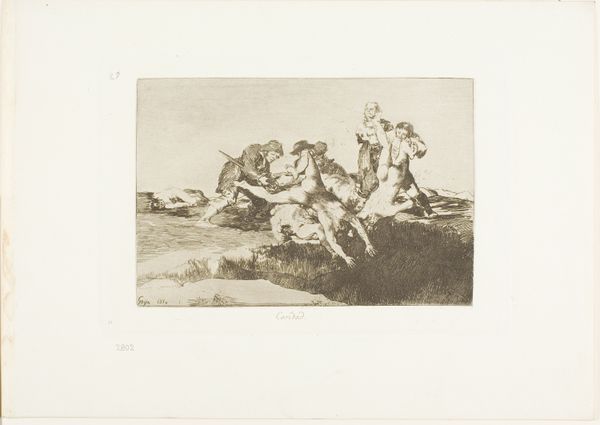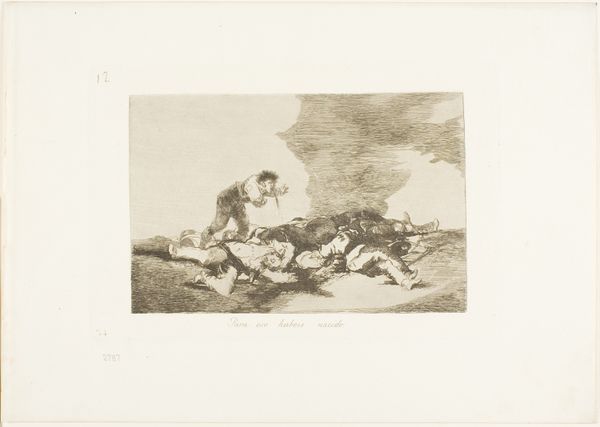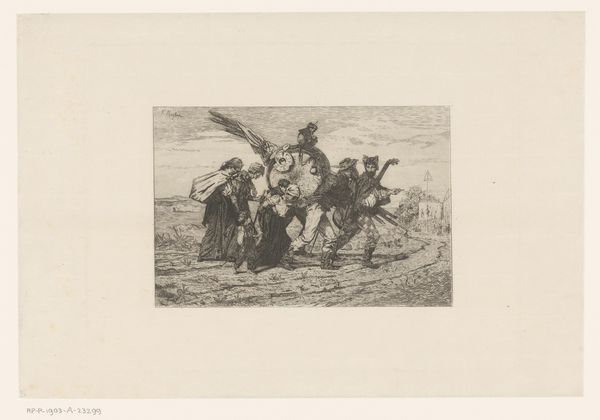
They Can Still be of Use, plate 24 from The Disasters of War Possibly 1810 - 1863
0:00
0:00
aquatint, drawing, print, etching, paper
#
aquatint
#
drawing
#
narrative-art
# print
#
etching
#
war
#
figuration
#
paper
#
romanticism
#
history-painting
#
realism
Dimensions: 132 × 213 mm (image); 160 × 257 mm (plate); 240 × 340 mm (sheet)
Copyright: Public Domain
Editor: Here we have Goya's "They Can Still be of Use," plate 24 from *The Disasters of War*, likely created between 1810 and 1863, a haunting etching and aquatint on paper. I am immediately struck by the apparent exhaustion and desperation of these figures; there's a profound sense of depletion. What are your thoughts when you observe this image? Curator: It’s crucial to understand the materials and labor involved in producing this image. Goya wasn’t simply depicting war; he was engaging in the physically demanding processes of etching and aquatint, manipulating metal and acid to create this scene of societal breakdown. Think of the acid biting into the metal, mirroring the ways war itself erodes humanity. The widespread dissemination of prints also facilitated discourse and contributed to shifting perceptions about conflict. Where was this print originally displayed and consumed? Editor: I believe it was intended for a broader public audience, moving beyond elite circles that traditionally consumed art. Do you believe Goya might have intended this piece to incite some kind of material action, perhaps in opposition to the war? Curator: Consider how the printmaking process itself allows for multiple originals. Each impression circulates, entering different social spheres, and influencing various viewpoints, and contributing to a collective understanding. The choice of etching and aquatint, while allowing for detail and tonal range, was also relatively accessible, widening its potential reach. And remember, this was produced within a context of shifting power relations, where older artistic traditions were being challenged. This image becomes both a document and an agent within these material conditions. Editor: So you're suggesting we shift our focus from a symbolic reading of the war to an analysis of how Goya, through material choices, made this artwork available to public debate and contributed to a specific visual culture around war. That makes a lot of sense. I see how focusing on the process challenges assumptions about the separation between art and craft. Curator: Exactly. It makes us reconsider Goya's own labor, the means of production, and how that feeds into consumption and interpretation of this brutal depiction of war.
Comments
No comments
Be the first to comment and join the conversation on the ultimate creative platform.
